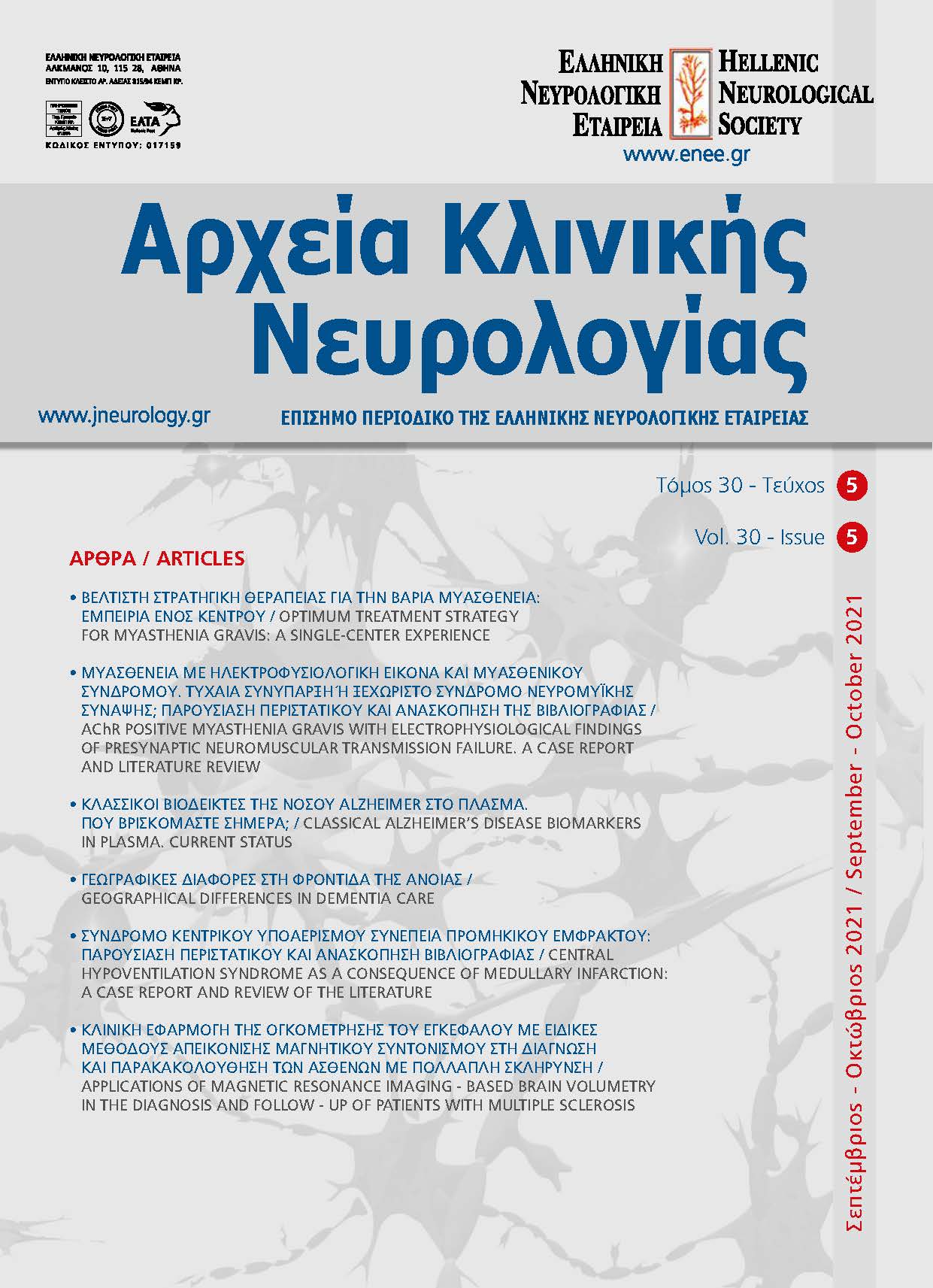AChR POSITIVE MYASTHENIA GRAVIS WITH ELECTROPHYSIOLOGICAL FINDINGS OF PRESYNAPTIC NEUROMUSCULAR TRANSMISSION FAILURE. A CASE REPORT AND LITERATURE REVIEW
Keywords:
myasthenia Gravis, Lambert Eaton myasthenic syndrome (LEMS), neurophysiological studyAbstract
Myasthenia gravis and Lambert-Eaton myasthenic syndrome are autoimmune disorders of the neuromuscular junction. They are both characterized by muscle weakness and fatigability. The differential diagnosis is based on clinical pattern, neurophysiological features and associated antibodies. We present a case of a 35 years old female with MG and electrophysiological findings of postsynaptic dysfunction. Ten years later, due to a clinical relapse with lower limb muscle weakness, the patient was reevaluated with electrophysiological testing that revealed a presynaptic neuromuscular transmission deficit. The P/Q type voltage-gated calcium channel antibodies were negative. The literature concerning cases with characteristics of both diseases is limited, and the coexistence of MG and LEMS as an overlap syndrome is controversial. We provide a review of all published cases with clinical and immunological diagnosis of MG with co-existing presynaptic neurophysiological findings. The majority of these patients presented with limb weakness, oculo-bulbar symptoms and absence or reduction of tendon reflexes, and half of the patients also had dysautonomia. A few cases were double seropositive for AChRabs (1 MuSK+) and voltage-gated calcium channel antibodies. In many cases good response was reported with 3,4 diaminopyridine. The distinction of Myasthenia gravis and Lambert–Eaton myasthenic syndrome is important due to different clinical course, therapeutic management and associations with malignancies. MG with electrophysiological presynaptic pattern indicative of Lambert-Eaton, is a rare condition associated with distinct clinical characteristics and therapeutic choices. Therefore, the recognition of such cases is imperative.


